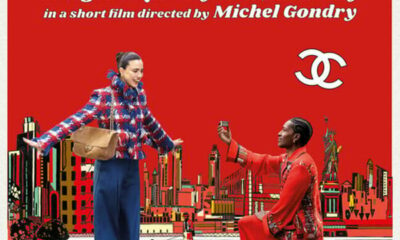Fashion
Bag charms selling for $1,000 are retail’s next little luxury
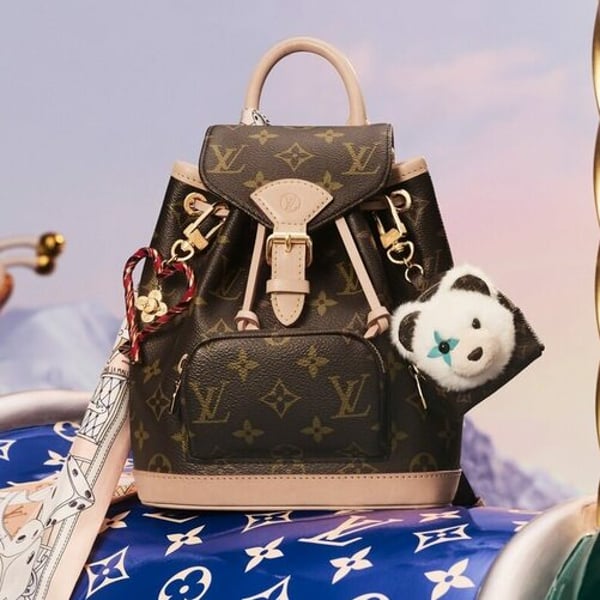
By
Bloomberg
Published
August 14, 2025
Years after Jane Birkin famously decorated her eponymous Hermès handbag with clusters of trinkets and strands of beads, bag charms have made a big comeback.
Plush Labubu keychains helped revive the Gen Z-fuelled accessorise-your-accessory trend and catapulted it into the mainstream. Now charms are showing up on elite fashion runways and dangling from the purses of celebrities.
Designer handbag makers, anxious for growth during a downturn, are especially eager to get in on the phenomenon. If affluent shoppers can’t be persuaded to drop thousands of dollars on a new purse, perhaps they can be enticed to spend a few hundred dollars on a branded charm for a purse they already own.
Ethan Diaz, 24, used to splurge regularly on high-priced purses and streetwear that he would barely use. Now, bag charms enable him to quickly switch up the look of his purses without blowing his budget. He recently dressed up his $695 Coach Soft Empire Carryall Bag with a handful of eclectic charms, including a $120 Longchamp keyring in the shape of a croissant.
The commercial director from New Jersey began buying the embellishments a year ago and now owns 30, the most expensive being a $1,010 Louis Vuitton crab charm that doubles as a small pouch. “You can mix and match and put it on different bags, so you’re not limited to one specific style,” Diaz said.
Sales at luxury brands have been falling for several quarters, and companies are putting out more affordable and smaller accessories to reverse the slump and drive up store traffic.
Last month LVMH Moët Hennessy Louis Vuitton SE reported that second-quarter sales fell 9% in its key fashion and leather goods unit as shoppers reined in purchases of costly purses and clothing. Rival Kering reported that Gucci sales plunged 25% during the same period compared with a year earlier, while sales at Prada declined 3.6%.
Shares in the companies are all down double digits in the last 12 months, and consultancy Bain & Co. expects the personal luxury goods industry to shrink between 2% and 5% this year. That would be the worst performance since the 2009 global financial crisis if the pandemic is excluded.
Tapping into the viral bag charm craze is “sensibly opportunistic” for luxury companies that might as well “make some money off the back of it,” said Neil Saunders, managing director at analytics firm GlobalData.
Tapestry Inc., which has been outperforming top-tier labels thanks to strong sales at its attainable luxury brand Coach, has expanded its assortment of charms there and at Kate Spade. The company plans to significantly increase the number of pieces offered at Kate Spade, where sales have been falling, during the holiday season.
Unique bag charms provide “an accessible way in” to the two brands, said Alice Yu, Tapestry’s vice president of strategy and consumer insights.
Ultra-luxury brands have sold charms for years, but mainly as afterthoughts to big-ticket items. Many sold them online only. Now the charms are front and centre in boutiques and at fashion shows.
“If we don’t get into this and lean into this, someone else will,” Saunders said of the prestige brands. And as some of their wealthy customers hold off on buying new purses and clothes, hooking them with a stylish bag charm helps maintain valuable client connections during a rough patch. “The worst thing for a brand is to lose a consumer completely,” he said.
During recent visits to Bloomingdale’s stores, statement charms were featured throughout the handbags departments. At the retailer’s Manhattan flagship, Prada was showcasing its $825 black and gold robot charm attached to a $2,300 backpack. In Los Angeles, Gucci’s $510 dragonfly-shaped keychain was clipped to one of the handles of a $1,950 handbag, and three dog-shaped charms, $450 each, were lined up in a display case alongside monogram card holders and wallets.
Although bag charms are booming, industry analysts caution that they can only bolster luxury brands to a point.
Ultimately, charms “will make up a very small portion” in sales for premium fashion labels, said Bloomberg Intelligence analyst Deborah Aitken. “Enough to keep brands active in the minds of potential shoppers, but at very limited total value.”
Louis Vuitton and Loewe declined to comment on their bag charm strategies or provide sales figures. Gucci and Fendi did not respond to requests for comment.
Klevisa Hendrix, a 27-year-old content creator from Los Angeles, began buying bag charms this year after seeing them on the Coach runway and now has a dozen in her growing collection. She typically spends less than $100 on a single charm. “You want to be fashionable,” she said, “but you want to still be able to afford fashion.”
Fashion
Chanel debuts A$AP Rocky as ambassador, with Margaret Qualley teaser video
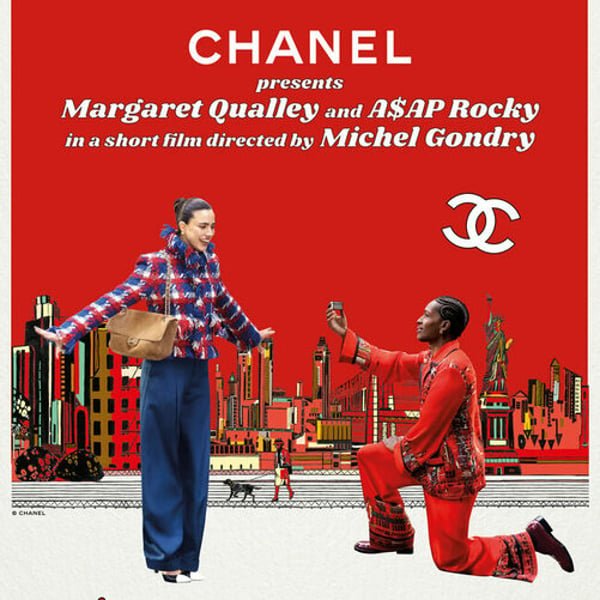
Published
November 30, 2025
Chanel has appointed A$AP Rocky as a new brand ambassador and debuted his tenure with a teaser video shot in New York co-starring Margaret Qualley.
The video appeared Sunday just 48 hours before Chanel’s couturier Michel Blazy will stage his debut collection of Métiers d’Art also in New York. It’s a unique line first created by Karl Lagerfeld that highlights the unique stable of artisans Chanel has assembled in such skills as embroidery, pleating, glove-making and costume jewelry.
Directed by Michel Gondry, the 2.49-minute short opens with the stars waking up in the bed of a walkup apartment in Williamsburg. Where, after a quick peck on her lover’s forehead, Qualley disappears into a tiny bathroom, before magically changing out of her blue nightie and reappearing in a red, white and blue houndstooth Chanel jacket, paired with pale blue pants, her hair in a chignon.
https://www.youtube.com/watch?v=live
No sooner than she has disappeared, than A$AP leaps out of bed and descends the tenement building’s outside steel stairs and sets off on a mad dash after Qualley. This leads to him swimming under the Brooklyn Bridge, and running north through the Lower East Side, before finally catching up with Qualley at Astor Place station. All the action backed up my moody ambient music courtesy of Le Motel.
In between, the rapper and husband of Rihanna, manages to find time to stop in two discount stores to acquire pants and a blazer. Arriving just in time, to genuflect onto one knee, and hold out a small white Chanel box, containing one assumes a diamond engagement ring, at the station entrance. The sight of which leads the actress to leap into the air in paroxysm of joy, before the happy couple march arm and arm back into the subway.
And off one assumes to attend the Métiers d’Art show, which will be revealed on Tuesday, 8 p.m. NYC time.
Copyright © 2025 FashionNetwork.com All rights reserved.
Fashion
Canada’s Lululemon revamps commercial strategy with new global leader
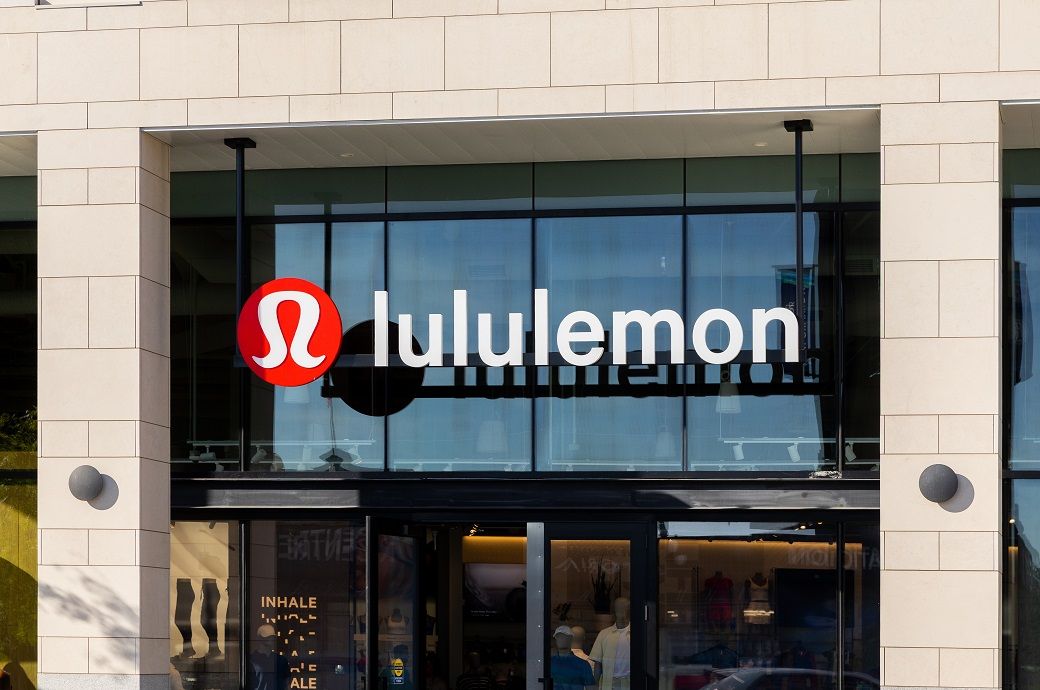
Ms. Burgoyne joined lululemon in 2006 and became the company’s first President in 2020. Throughout her tenure, she has assumed roles of increasing responsibility and led the North America business through periods of rapid growth and expansion.
Lululemon Athletica has announced that Celeste Burgoyne, president of the Americas and global guest innovation, will leave at the end of December 2025 after 19 years with the brand.
The company will consolidate regional leadership and has appointed André Maestrini as president and chief commercial officer, giving him global oversight of stores, regions, digital channels and commercial strategy.
“We are grateful for Celeste’s leadership and significant contributions to lululemon’s business and culture over the past 19 years. She has been instrumental in growing our footprint in the Americas, creating high-quality guest experiences, and mentoring our teams across the organization,” said Calvin McDonald, Chief Executive Officer, lululemon. “I deeply appreciate her partnership and friendship, and we wish her all the best in the future.”
“My time at lululemon has been both inspiring and rewarding beyond belief,” said Ms. Burgoyne. “I am so proud of what we have accomplished as an organization since I joined in 2006 and know the team will take the company to even greater heights in the years to come. I look forward to continuing to support the brand as a lifelong fan.”
In conjunction with this announcement, lululemon has made the decision to consolidate regional leadership across the company and appoint André Maestrini as President and Chief Commercial Officer, effective immediately. Mr. Maestrini will continue to report directly to Mr. McDonald.
In this newly created role, Mr. Maestrini will provide integrated oversight of all of lululemon’s regions, stores, and digital channels globally. He will also oversee lululemon’s global commercial strategy with a focus on continued market expansion, revenue generation, and accelerating best practice sharing, across all regions including North America.
Mr. Maestrini joined lululemon in 2021 as Executive Vice President of International. In his current role, he has overseen lululemon’s operations in EMEA, APAC, and China Mainland, and has helped to more than quadruple lululemon’s international revenues.
“André has demonstrated a proven ability to unlock opportunities, advance our global expansion, and deliver growth across multiple markets,” said Mr. McDonald. “Leveraging operational discipline, deep guest insights, and extensive brand-building experience, André is the ideal person to lead our business across all markets, including North America, as we remain focused on delivering value for our guests, employees, and shareholders.”
Before joining lululemon, Mr. Maestrini spent 14 years at adidas in various senior roles across the globe. During this time, he served in a number of General Manager positions where he helped grow the company’s global sports categories and regional markets. Prior to adidas, Mr. Maestrini held marketing roles at The Coca-Cola Company, Danone, and Kraft Jacobs Suchard.
Note: The headline, insights, and image of this press release may have been refined by the Fibre2Fashion staff; the rest of the content remains unchanged.
Fibre2Fashion News Desk (RM)
Fashion
India’s growth expected to be robust despite external headwinds: IMF
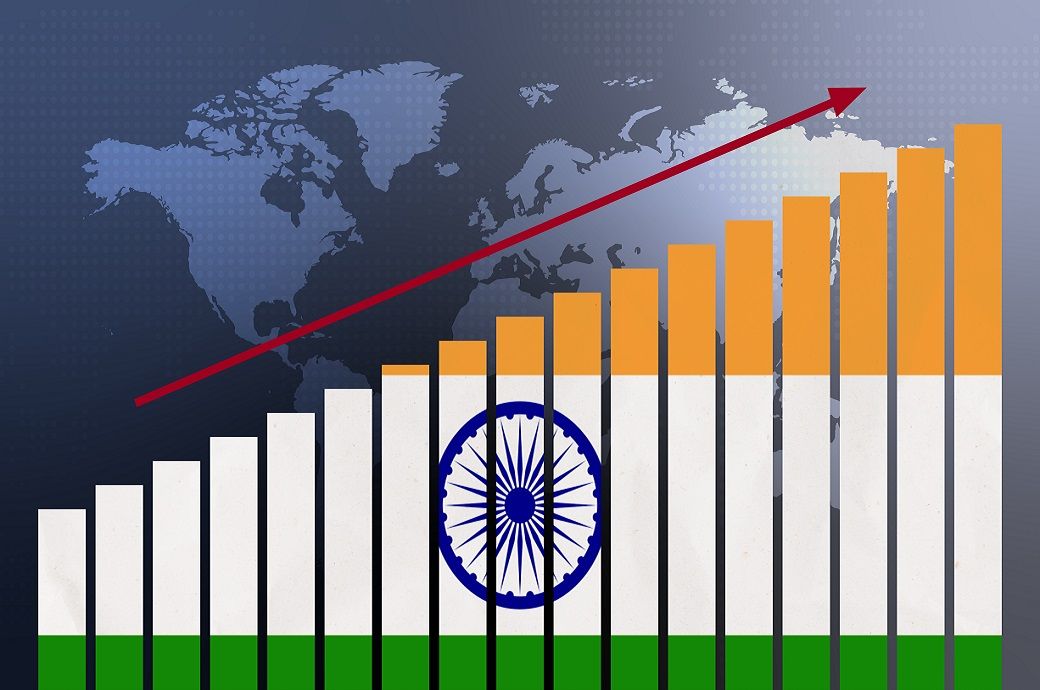
Under the baseline assumption of prolonged 50-per cent US tariffs, India’s real gross domestic product (GDP) is projected to grow at 6.6 per cent in fiscal 2025-26 (FY26) before moderating to 6.2 per cent in FY27, the IMF said.
The reform of the goods and services tax (GST) and the resulting reduction in the effective rate are expected to help cushion the adverse impact of tariffs.
Despite external headwinds, India’s growth is expected to be robust, backed by favourable domestic conditions, the IMF has said.
Assuming prolonged 50-per cent US tariffs, FY26 real GDP may grow at 6.6 per cent before moderating to 6.2 per cent in FY27.
Further deepening of geo-economic fragmentation could lead to tighter financial conditions, higher input costs and lower trade, FDI and economic growth.
Headline inflation is projected to remain well contained, reflecting the one-off effect of the GST reform and continued benign food prices, it remarked in a release.
Looking ahead, India’s ambition to become an advanced economy can be supported by advancing comprehensive structural reforms that enable higher potential growth, the IMF noted.
There are significant near-term risks to the economic outlook. On the upside, the conclusion of new trade agreements and faster implementation of structural reform domestically could boost exports, private investment and employment.
On the downside, further deepening of geo-economic fragmentation could lead to tighter financial conditions, higher input costs and lower trade, foreign direct investment (FDI) and economic growth.
Unpredictable weather shocks could affect crop yields, adversely impact rural consumption and reignite inflationary pressures, the IMF added.
Fibre2Fashion News Desk (DS)
-

 Sports7 days ago
Sports7 days agoWATCH: Ronaldo scores spectacular bicycle kick
-

 Entertainment7 days ago
Entertainment7 days agoWelcome to Derry’ episode 5 delivers shocking twist
-

 Politics7 days ago
Politics7 days agoWashington and Kyiv Stress Any Peace Deal Must Fully Respect Ukraine’s Sovereignty
-

 Business7 days ago
Business7 days agoKey economic data and trends that will shape Rachel Reeves’ Budget
-

 Tech5 days ago
Tech5 days agoWake Up—the Best Black Friday Mattress Sales Are Here
-

 Fashion7 days ago
Fashion7 days agoCanada’s Lululemon unveils team Canada kit for Milano Cortina 2026
-

 Politics7 days ago
Politics7 days ago53,000 Sikhs vote in Ottawa Khalistan Referendum amid Carney-Modi trade talks scrutiny
-

 Tech5 days ago
Tech5 days agoThe Alienware Aurora Gaming Desktop Punches Above Its Weight




